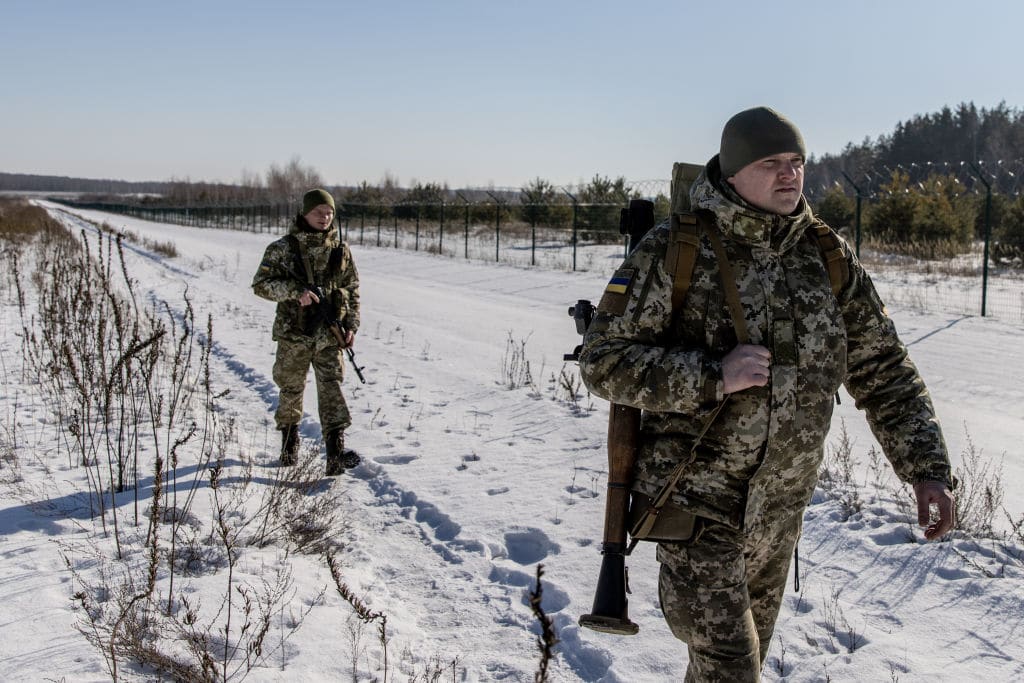TOPLINE
Russian President Vladimir Putin ordered a “special military operation” in Ukraine early Thursday, a chilling announcement that was immediately followed by reports of explosions across Ukraine, propelling the country into war after months of massive Russian troop buildups.
KEY FACTS
Russia launched the operation in response to calls for assistance from Russian-backed separatist leaders in eastern Ukraine, Putin claimed in a speech aired on Russian television.
CNN reported explosions were audible from Ukraine’s capital of Kyiv and the eastern cities of Kharkiv and Kramatorsk after Putin’s speech.
Ukrainian Foreign Minister Dmytro Kuleba tweeted that Putin has “launched a full-scale invasion of Ukraine.”
In a statement issued on its website, Ukraine’s State Border Guard said the country was also facing an attack along its northern borders by Russian troops with support from Belarusian forces.
In brief video shared on Facebook, Ukrainian President Volodymyr Zelenskyy declared martial law across the whole territory of Ukraine while urging the country’s citizens to not panic.
Putin called on Ukrainians to lay down their weapons and insisted he doesn’t want to occupy the country, claiming the military action is designed to “demilitarize and denazify” Ukraine.
Putin’s speech also included an ominous warning that he will bring to justice “those who have committed numerous bloody crimes against civilians, including citizens of the Russian Federation.”
The Russian leader also issued a stern warning against any international opposition to the move, stating any attempts to impede Moscow’s actions “let alone create threats for our country” will lead to consequences “never seen in history.”
CHIEF CRITIC
In a statement, U.S. President Joe Biden denounced Putin’s actions and vowed to impose additional sanctions for the “needless act of aggression” on Ukraine. “President Putin has chosen a premeditated war that will bring a catastrophic loss of life and human suffering,” Biden said. “Russia alone is responsible for the death and destruction this attack will bring, and the United States and its Allies and partners will respond in a united and decisive way.”
CRUCIAL QUOTE
In a statement issued after a call with Zelenskyy, Biden said “I condemned this unprovoked and unjustified attack by Russian military forces. I briefed him on the steps we are taking to rally international condemnation…Tomorrow, I will be meeting with the Leaders of the G7, and the United States and our Allies and partners will be imposing severe sanctions on Russia.:
SURPRISING FACT
Putin launched the attack during an emergency meeting of the U.N. Security Council in New York called to deal with the Ukraine crisis. Sergiy Kyslytsya, Ukraine’s ambassador to the United Nations, denounced Russia’s actions in a fiery speech: “There is no purgatory for war criminals. They go straight to hell,” he said. Russian ambassador Vasily Nebenzya—who currently serves as the Security Council’s chair—responded by denying that Russia declared war, insisting Putin’s “special military operation” is somehow distinct from a war.
TANGENT
Shortly before Putin announced the invasion, Ukrainian President Volodymyr Zelenskyy made a final plea for peace in a late-night speech. Zelenskyy said he attempted to contact Putin, but the Kremlin didn’t respond.
KEY BACKGROUND
Russia and Ukraine have been locked in a tense relationship since 2014, when Russia invaded and annexed Ukraine’s Crimean Peninsula, an area roughly the size of Vermont whose 2.4 million inhabitants are mostly ethnic Russians. Russian troops and military hardware were also deployed eight years ago in support of separatists in the Donbas, an area of Ukraine bordering Russia, though the Kremlin officially denied participating in the conflict. In December, Russia moved about 100,000 troops close to its border with Ukraine, a number that swelled to more than 150,000 by last week according to the U.S., prompting the White House to warn that Russia could launch an attack justified by a “false-flag” operation portraying Ukraine as the aggressor. Violations of a ceasefire in the Donbas have become more frequent over the last week, a trend U.S. officials viewed as an attempt by Russia to create a pretext for war. On Monday, Putin said Russia will recognize the independence of Ukraine’s partially separatist-controlled Donetsk and Luhansk regions, and accused Ukraine of military aggression, a move the White House called a likely prelude to invasion, though the Kremlin has dismissed concerns about a Russian invasion of Ukraine as “madness and scaremongering.” American and European officials have searched for a diplomatic solution to the crisis, but Russia has continued to push for Ukraine to be barred from joining NATO, a demand the U.S. and its allies have not accepted.
WHAT TO WATCH FOR
Reactions from Western governments. The U.S. and its allies’ responses to Russian aggression so far have ranged from supplying the Kyiv government with weapons to halting the activation of Nord Stream 2, an $11 billion natural gas pipeline connecting Russia to Germany—a move that threatens to deprive Russia of tens of billions of dollars in natural gas revenue. NATO announced January 24 that member states had sent ships and fighter jets to Lithuania and Bulgaria in response to the crisis. Though U.S. troops have been deployed to Eastern European NATO allies, Biden has ruled out the possibility of deploying U.S. troops to defend Ukraine or to evacuate Americans, arguing a clash between U.S. and Russian troops would spark “a world war.”
